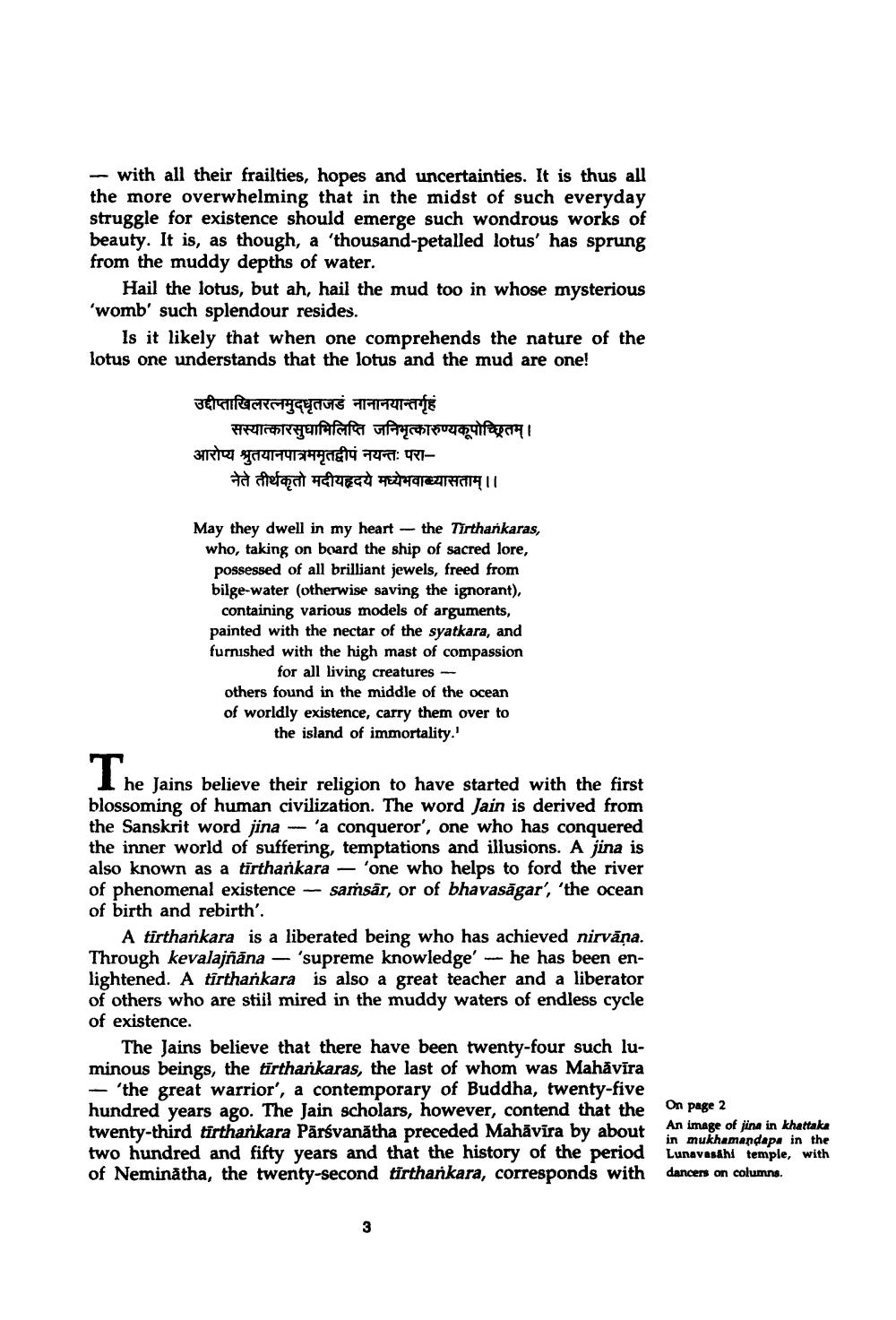________________
- with all their frailties, hopes and uncertainties. It is thus all the more overwhelming that in the midst of such everyday struggle for existence should emerge such wondrous works of beauty. It is, as though, a 'thousand-petalled lotus' has sprung from the muddy depths of water.
Hail the lotus, but ah, hail the mud too in whose mysterious 'womb' such splendour resides.
Is it likely that when one comprehends the nature of the lotus one understands that the lotus and the mud are one!
उद्दीप्ताखिलरत्नमुदधृतजडं नानानयान्तर्गह
सस्यात्कारसुधामिलिप्ति जनिभृत्कारुण्यकूपोच्छ्रितम्। आरोप्य श्रुतयानपात्रममृतद्वीपं नयन्तः परा
नेते तीर्थकृतो मदीयहृदये मध्येभवाध्यासताम् ।।
May they dwell in my heart - the Tirthankaras, who, taking on board the ship of sacred lore,
possessed of all brilliant jewels, freed from bilge-water (otherwise saving the ignorant),
containing various models of arguments, painted with the nectar of the syatkara, and furnished with the high mast of compassion
for all living creatures - others found in the middle of the ocean of worldly existence, carry them over to
the island of immortality.'
he Jains believe their religion to have started with the first blossoming of human civilization. The word Jain is derived from the Sanskrit word jina - 'a conqueror', one who has conquered the inner world of suffering, temptations and illusions. A jina is also known as a tirtharikara - 'one who helps to ford the river of phenomenal existence - saṁsår, or of bhavasāgar', 'the ocean of birth and rebirth'.
A tirthankara is a liberated being who has achieved nirvana. Through kevalajñāna - 'supreme knowledge - he has been enlightened. A tirthankara is also a great teacher and a liberator of others who are stiil mired in the muddy waters of endless cycle of existence.
The Jains believe that there have been twenty-four such luminous beings, the tirtharkaras, the last of whom was Mahāvīra
– 'the great warrior', a contemporary of Buddha, twenty-five hundred years ago. The Jain scholars, however, contend that the twenty-third tirthankara Pārsvanātha preceded Mahāvīra by about two hundred and fifty years and that the history of the period of Neminátha, the twenty-second tirtharkara, corresponds with
On page 2
in mukhamandape in the Lunavasthi temple, with dancers on columna.




